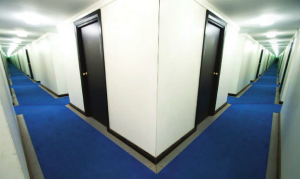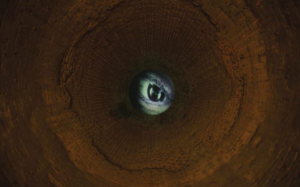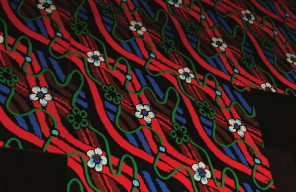The blacksmiths, dressed in their work attire of white and black, are drawn into a teasing, seductive dance by the White Lady of the forge. Who is she, the legendary female figure who, in the forge's dim light, both attracts and frightens? Does the White Lady always bring a warning of misfortune – or does she also possess a playful kindness that tricks everyone? Perhaps the blacksmiths know...
Kjell Engman interprets the life of the forge – and its era – in a world of glass art. Captivated by the scene that the cathedral of labor represents, he portrays the dreams – or nightmares – of the people whose lives were once intertwined with the iron works.
The White Lady is the main character. We are not sure where she is – or if she even exists. The blacksmiths symbolize the workers who kept the forge running, around the clock, year-round. The white-hot iron, which should have been tapped through the bottom of the blast furnace, unexpectedly flows here in golden streams. In a pitch-black corner, ice crystals shimmer, and the aristocracy is gathered at the bar. With lofty elegance, the mill owner – secretly – observes it all. Is it all an illusion? The presence of the 1920s is palpable – with its once-provocative fashion of daring dresses and high-heeled dancing shoes, and with the real blast furnace serving as both backdrop and center. The blast furnace was new in 1915. The spirit of the times, after the Great War, was also new. A subtle undertone of doom emerges – a premonition of the 1930s’ collapses in the world’s economy and democracy, and of the very first creations of large-scale industrialism.
"Humanity always wears a mask. Which one we put on in the moment depends on the context," says Kjell Engman. (2006)









